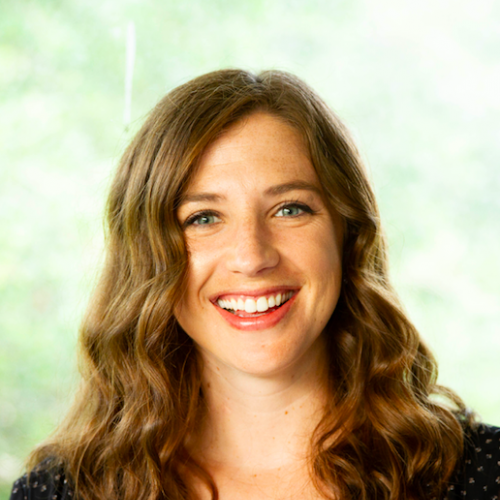The Planned Giving Trees
When I was four, my father moved us to a house built on—and surrounded by—old cornfields. I was very confused. Where would we hang my tire swing?
I asked my dad where all the trees were. To my delight, he told me some were coming the next day! I couldn’t wait to see the humungous trucks or airplanes that were going to deliver these trees for our new yard.
A normal-sized truck rumbled up the gravel drive the next morning with a bunch of sticks. I started crying when my dad said those were the trees. I cried even harder when he said it would be 20 to 30 years before any of those sticks could hold my beloved swing.
For years thereafter, more saplings arrived, and I began to despise those “sticks,” that were my job to mulch and water in the spring and rake up their leaves in the fall. I was too young to know that my dad had a vision, even as those sticks started to grow into little trees. From the type of tree to the layout of where each was planted, every detail was a part of a plan.
A planned gift is like a seedling—it takes a long time for it to grow and mature into its final form. Like different types of trees, each type of planned gift has a different path to reach its full potential. The donor of a planned gift usually leaves it as a bequest, so they won’t be around to help with the details. That’s why it’s of the utmost importance to keep meticulous records for planned gifts.
Blackbaud’s Raiser’s Edge® has always helped your organization track planned gifts. Our new course, Planned Giving, provides additional insight on the best strategies and procedures to nurture your planned giving program from initial donations to maturity.
Learn about the different types of planned gift vehicles—like bequests, annuities, life insurance policies—and how to create records with relevant details for each one. This course explores the parts of a planned gift record and which fields are necessary for accurate records and reporting. One of the most important tasks is regularly updating planned gift records, as they are long-term and dependent on current information, such as constituent and beneficiary specifics or economic impact.
Planned gifts are beautiful contributions to future generations. Learning to take care of them, in turn, is a gift for yourself, your organization, and other recipients.
It’s been 30 years since those first trees were planted, and when I go back home, I get to watch my father chase his grandchildren through a maze of pines that lead to a “secret fort” created by their boughs. Maples, oaks, elms, and ash light the sky with brilliant hues of red, gold, and orange every fall. I know now that my father foresaw a beautiful arbor for our family to enjoy for generations. And, more importantly, I know that you’re never too old for a tire swing.
This course is included with your Blackbaud University Learn More and Learn Everything subscriptions. Not a subscriber? Chat with us now!
I asked my dad where all the trees were. To my delight, he told me some were coming the next day! I couldn’t wait to see the humungous trucks or airplanes that were going to deliver these trees for our new yard.
A normal-sized truck rumbled up the gravel drive the next morning with a bunch of sticks. I started crying when my dad said those were the trees. I cried even harder when he said it would be 20 to 30 years before any of those sticks could hold my beloved swing.
For years thereafter, more saplings arrived, and I began to despise those “sticks,” that were my job to mulch and water in the spring and rake up their leaves in the fall. I was too young to know that my dad had a vision, even as those sticks started to grow into little trees. From the type of tree to the layout of where each was planted, every detail was a part of a plan.
A planned gift is like a seedling—it takes a long time for it to grow and mature into its final form. Like different types of trees, each type of planned gift has a different path to reach its full potential. The donor of a planned gift usually leaves it as a bequest, so they won’t be around to help with the details. That’s why it’s of the utmost importance to keep meticulous records for planned gifts.
Blackbaud’s Raiser’s Edge® has always helped your organization track planned gifts. Our new course, Planned Giving, provides additional insight on the best strategies and procedures to nurture your planned giving program from initial donations to maturity.
Learn about the different types of planned gift vehicles—like bequests, annuities, life insurance policies—and how to create records with relevant details for each one. This course explores the parts of a planned gift record and which fields are necessary for accurate records and reporting. One of the most important tasks is regularly updating planned gift records, as they are long-term and dependent on current information, such as constituent and beneficiary specifics or economic impact.
Planned gifts are beautiful contributions to future generations. Learning to take care of them, in turn, is a gift for yourself, your organization, and other recipients.
It’s been 30 years since those first trees were planted, and when I go back home, I get to watch my father chase his grandchildren through a maze of pines that lead to a “secret fort” created by their boughs. Maples, oaks, elms, and ash light the sky with brilliant hues of red, gold, and orange every fall. I know now that my father foresaw a beautiful arbor for our family to enjoy for generations. And, more importantly, I know that you’re never too old for a tire swing.
This course is included with your Blackbaud University Learn More and Learn Everything subscriptions. Not a subscriber? Chat with us now!
4
Comments
-
Thank you for sharing a bit of your childhood with us! What a great tie-in. Talking of planned giving, I am not aware of any of our donors doing this so I need to do some research and find out if it's something any of them are planning to do. Then I need to learn more about it!
0
Categories
- All Categories
- 6 Blackbaud Community Help
- 209 bbcon®
- 1.4K Blackbaud Altru®
- 394 Blackbaud Award Management™ and Blackbaud Stewardship Management™
- 1.1K Blackbaud CRM™ and Blackbaud Internet Solutions™
- 15 donorCentrics®
- 359 Blackbaud eTapestry®
- 2.5K Blackbaud Financial Edge NXT®
- 646 Blackbaud Grantmaking™
- 563 Blackbaud Education Management Solutions for Higher Education
- 3.2K Blackbaud Education Management Solutions for K-12 Schools
- 934 Blackbaud Luminate Online® and Blackbaud TeamRaiser®
- 84 JustGiving® from Blackbaud®
- 6.4K Blackbaud Raiser's Edge NXT®
- 3.7K SKY Developer
- 243 ResearchPoint™
- 118 Blackbaud Tuition Management™
- 165 Organizational Best Practices
- 238 The Tap (Just for Fun)
- 33 Blackbaud Community Challenges
- 28 PowerUp Challenges
- 3 (Open) Raiser's Edge NXT PowerUp Challenge: Product Update Briefing
- 3 (Closed) Raiser's Edge NXT PowerUp Challenge: Standard Reports+
- 3 (Closed) Raiser's Edge NXT PowerUp Challenge: Email Marketing
- 3 (Closed) Raiser's Edge NXT PowerUp Challenge: Gift Management
- 4 (Closed) Raiser's Edge NXT PowerUp Challenge: Event Management
- 3 (Closed) Raiser's Edge NXT PowerUp Challenge: Home Page
- 4 (Closed) Raiser's Edge NXT PowerUp Challenge: Standard Reports
- 4 (Closed) Raiser's Edge NXT PowerUp Challenge: Query
- 779 Community News
- 2.9K Jobs Board
- 53 Blackbaud SKY® Reporting Announcements
- 47 Blackbaud CRM Higher Ed Product Advisory Group (HE PAG)
- 19 Blackbaud CRM Product Advisory Group (BBCRM PAG)








